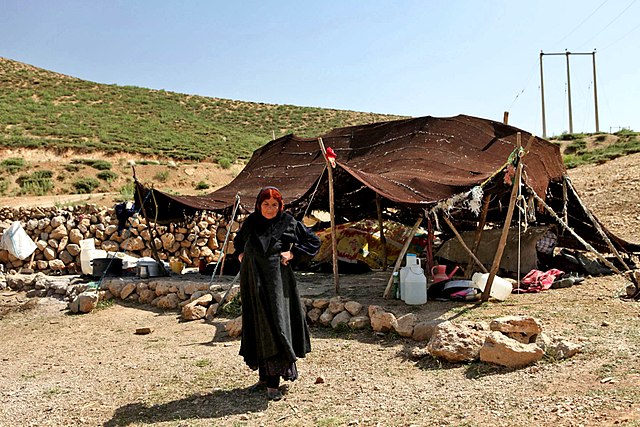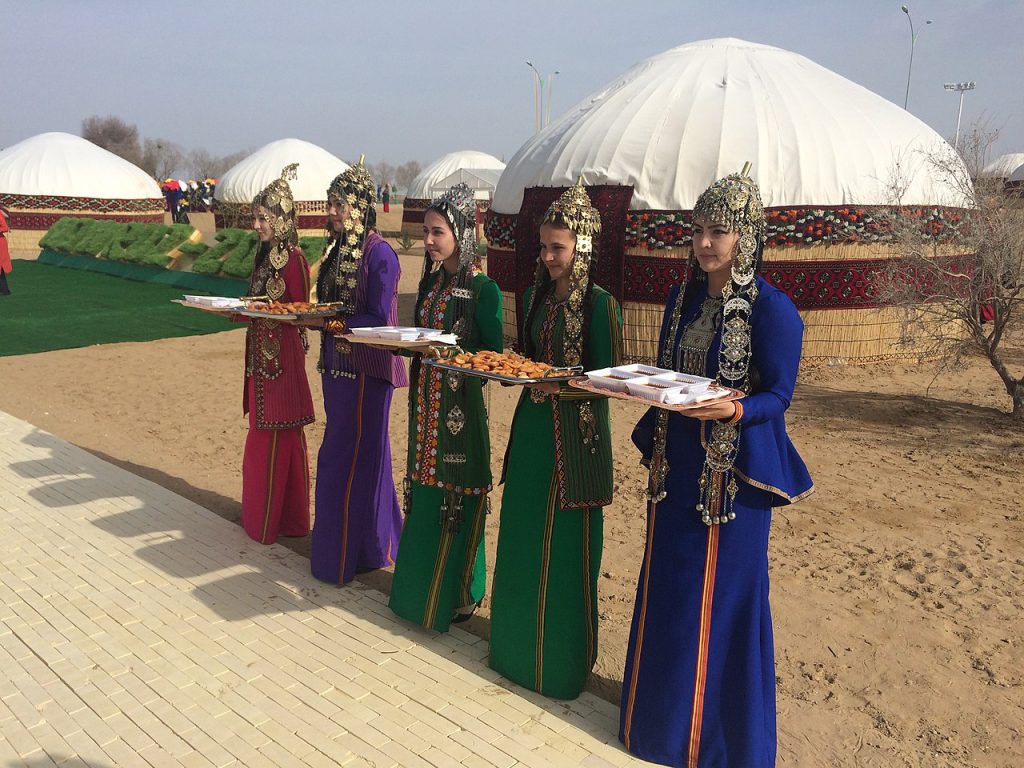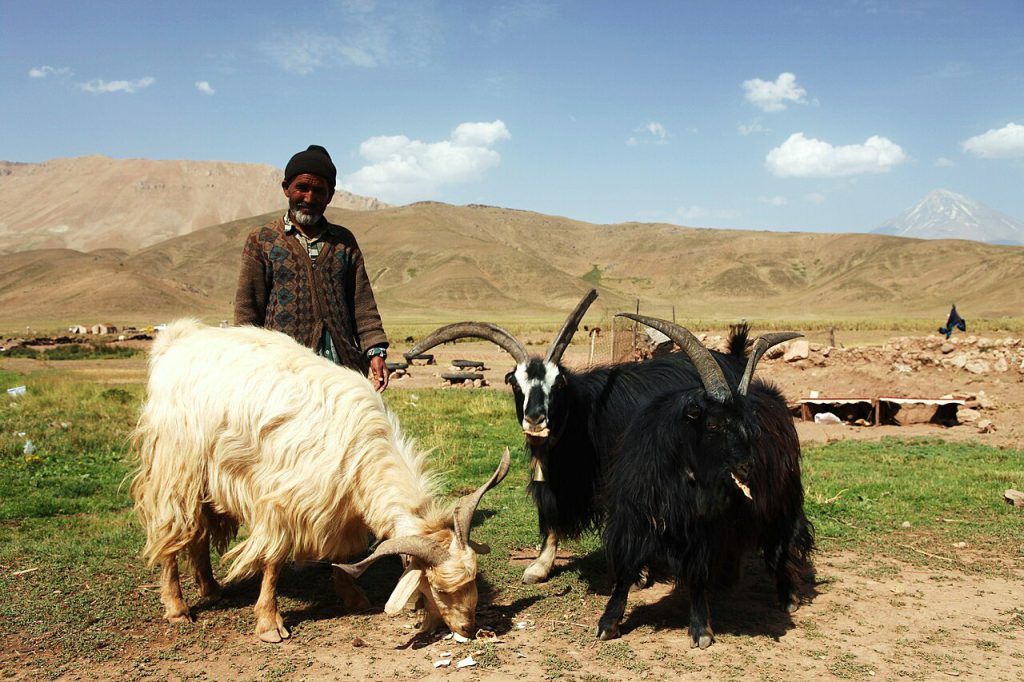Table of Contents
Amidst the quiet beauty of nature, Iran nomads live a simple life, moving from place to place with their animals, tents, and stars as their companions. Their way of life is a blend of tradition and nature’s rhythms, passed down through generations.
These nomads offer a glimpse into a world where life moves at a slower pace, where the bond between people, animals, and the land is strong. With their numbers declining, there’s a growing need to appreciate and protect their way of life. Joining a nomadic tour lets you step into their world, where simplicity and connection to nature are everything.
History of Iran Nomads
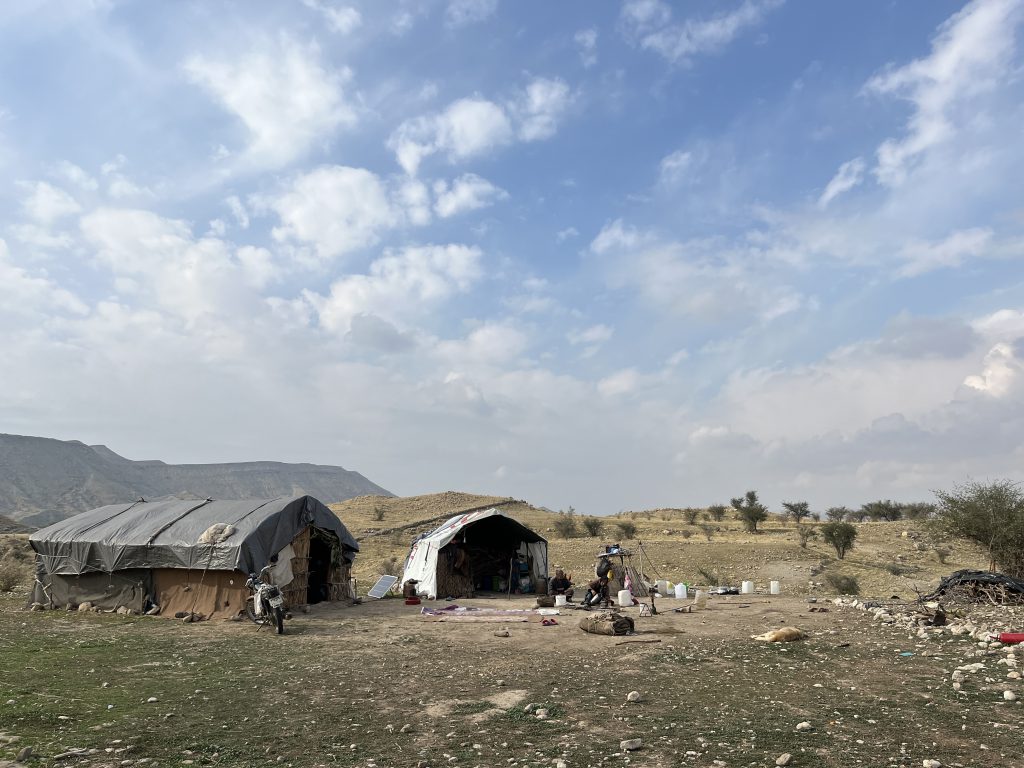
Imagine the vivid colors of nomadic women dresses in Iran, and the strong presence of men standing proudly by their black tents, sporting impressive mustaches. Children with sparkling eyes and rosy cheeks fill the air with laughter, creating a picturesque scene that speaks volumes.
The tale of Iran’s nomads stretches far back to ancient times, around the second millennium B.C., when the Aryans first settled on the Iranian plateau. Some settled down to farm, while others stuck to their nomadic ways, roaming with their herds to escape harsh weather.
As cities grew and technology advanced, these nomads persisted, leaving their mark on Iran’s history by serving in armies and even founding great empires like the Medes and the Achaemenid. Today, a small but proud population of 19 nomadic tribes still hold onto their ancestors’ traditions. Alongside countries like Kyrgyzstan and Mongolia, Iran boasts one of the world’s largest nomadic communities. Despite changes brought by modern life, the nomads’ unique customs, known for their warmth and generosity, continue to enchant us, preserving a way of life where freedom reigns supreme.
Iran Nomadic Life
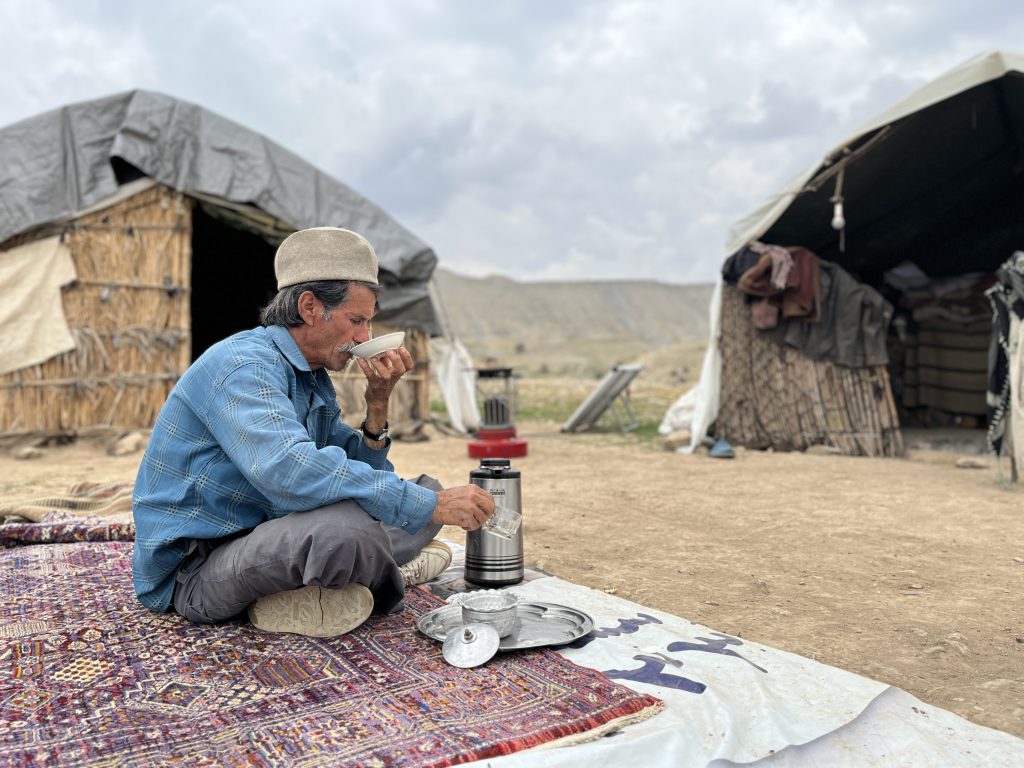
The nomads in Iran lead a simple yet fascinating life, in tune with the rhythms of nature. Twice a year, they embark on a journey dictated by the changing seasons, a tradition known as Kooch. In spring, they head to lush pastures, called Yeylaq, where their animals thrive on the plentiful grass. As winter approaches, they retreat to warmer grounds, known as Qeshlaq, where they huddle together until the cold subsides. This nomadic journey is a testament to their deep connection with the land and its cycles.
Within this lifestyle, resilience and self-sufficiency reign supreme. Every day begins with the first light, as men and women alike tend to their duties. While men lead their herds to graze, women stay behind to craft dairy products and intricate wool carpets, passed down through generations. These carpets, adorned with timeless patterns, serve as both cultural symbols and commodities for trade in nearby towns. Through this exchange, the nomads sustain their way of life, weaving a rich tapestry of tradition amidst the vast expanse of the wilderness.
Iranian Nomads Religion
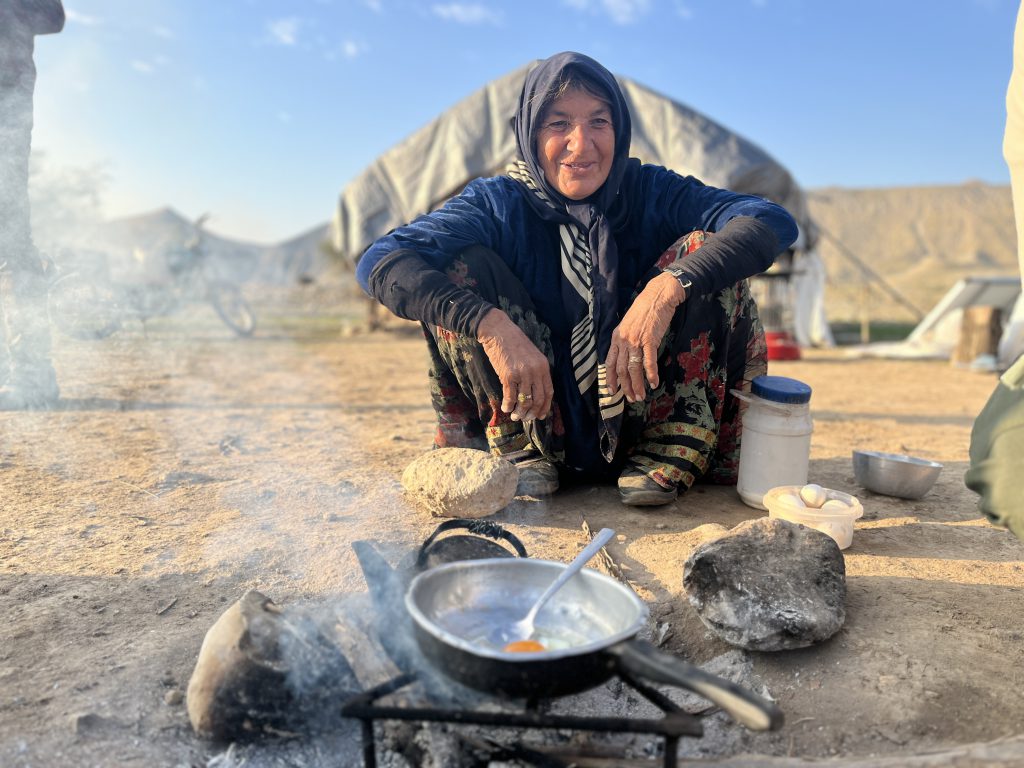
Iran nomads are a mix of old traditions and new ideas. Most of them, like the Bakhtiaris, follow Shia Islam. However, some Bakhtiari Lurs have started to explore Zoroastrianism recently, showing how their beliefs are changing. Even though Bakhtiari society is mostly run by men, women still have a lot of freedom. They speak a special kind of Persian called Lori, just like many other people in Iran.
Language is a big part of who they are. Speaking Lori helps them share stories and keep their history alive. Even with rules about who’s in charge, women find ways to make their own choices. The nomads of Iran show that differences can make a community stronger, with their mix of faiths, languages, and ways of living.
Iran Nomads Clothing
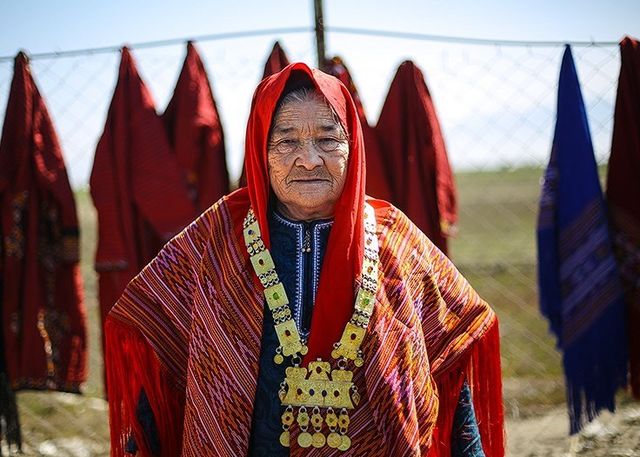
The clothes worn by Iran nomads tell stories of tradition and heritage. Considering traditional Iranian clothing, for men, there’s a mix of loose pants, hats, and long coats or vests, all made from natural materials and decorated with special patterns. These outfits are held together with a shawl around the waist, blending practicality with cultural flair.
Women nomads, on the other hand, embrace colorful, layered skirts that bring cheer to everyday life and sparkle during weddings. While younger generations may opt for modern attire, it’s the elders and women who proudly wear these traditional garments, keeping the nomadic spirit alive in every stitch and pattern.
Major Iranian Tribes
Iranian nomadic family tribes are a diverse mix of groups and tribes, each with its own unique culture and way of life. The main Iran nomads are Kurdish Tribes, Lur Tribes, Shahsevan Tribes, Qashqai Tribes, Balouch Tribes, Khamseh Tribes, Turkmen Tribes, and Arab Tribes.
From the Kurdish Tribes in the mountains to the Baloch Tribes in the deserts, these nomads have rich traditions passed down through generations. Whether it’s the Shahsevan on the plains or the Turkmen along ancient trade routes, each tribe adds its own flavor to Iran’s cultural landscape, making it a fascinating place to explore. Here is the short Iran nomad list:
Kurdish Tribes
In the colorful fabric of Kurdish culture, we find a blend of bravery, spirituality, and strength. The word ‘Kurd’ means both a wanderer and a hero, as celebrated in Ferdowsi’s Shahnameh. Kurds follow different branches of Islam, like Shiite and Sunni, and also embrace mystical beliefs such as Qadiriyyah and Nashnabidiyeh. Their language, a part of Persian, includes various dialects like Kormanji, Sourani, and Laki, reflecting the diverse regions they inhabit.
Water holds immense importance in the dry lands of Kurdistan, especially during droughts. In the “Praying for Rain” ceremony, children carry rain dolls through villages, asking for blessings of rain and abundant crops. Another significant festival is Pir Shalyar, honoring a revered figure with special powers. Through a traditional dance called Halparin, Kurds express unity and resilience, starting with slow moves and building to faster, powerful gestures. As nomads, they find shelter in the sturdy ‘Black Tent,’ woven from goat’s wool. Known as “Rash Mal” in Kurdish, it protects them from sun, wind, and rain, symbolizing their endurance and adaptability to nature’s challenges.
Lur Tribes
Embarking on a journey through Iran’s nomadic heritage reveals the captivating world of the Lur tribes, wrapped in ancient tales and historical intrigue. The term “Lur” itself holds various meanings, from its roots in the Loor plains to its connection with mountain forests or legendary kings. Nestled amidst the rugged terrain of Zagros Mountain, the Lur people thrive in two primary groups: the Small Lur, comprising Lorestan and Ilam, and the distinguished Great Lur, home to the formidable Bakhtiari and resilient Mamasani.
Among these, the Bakhtiari Nomads stand out, leading grand seasonal migrations known as “Kuch” across Khuzestan, Kohgiluyeh, and Boyer-Ahmad, leaving an indelible mark on the landscape.
The cultural tapestry of the Lur uncovers a rich array of customs and rituals that shape their nomadic lifestyle. For the Small Lurs, the iconic black tent, or “Duar”, symbolizes shelter, while the Great Lurs cherish their communal identity embodied in the “Bohon”. Journeying through Bakhtiari province reveals cemeteries adorned with majestic lion statues, honoring the bravery and skill of Bakhtiari hunters. Amidst life’s rhythms, the Lurs pause to celebrate Nowruz, cleansing their homes and paying respects to the departed in solemn nighttime rituals.
The essence of Lur culture shines through the graceful “Choobi” dance, where men and women come together in a mesmerizing circle, guided by the skilled steps of the “Sarchoobi”. In the vibrant tapestry of Lur culture, each ritual and dance step tells a story of resilience and tradition, weaving a timeless narrative across Iran’s rugged landscapes.
Bakhtiari Tribe
The Bakhtiari people come from the hillsides of the Zagros Mountains. They are known for their beautiful Iranian handicrafts, which have earned them UNESCO recognition. They speak a special kind of Persian called Luri, and also know the official Persian language.
In the summer, you’ll find them in the Zagros Mountains, but they travel to different provinces like Chahar Mahal and Bakhtiari, Lorestan, Khuzestan, and Isfahan throughout the year. They’re said to be descendants of a legendary Persian hero named Fereydun. Bakhtiari men wear mustaches and dress in black and white coats with loose pants and black hats. Women wear colorful clothes adorned with beads, adding brightness to their surroundings.
Balouch Tribes
At the core of Balouchi culture is a strong sense of loyalty and honor. They stand by their promises and never turn away those in need. Balouchi homes offer refuge to anyone seeking help, regardless of their situation. This act of sheltering and aiding others, called ‘Miarjal,’ showcases the Balouchi commitment to compassion and justice.
Alongside their noble traditions, Balouchi people are known for their artistic skills. Women weave beautiful carpets with geometric designs, while their needlework is particularly renowned. Artists like Mahtab Norouzi have gained fame for their intricate embroidery, even dressing dignitaries like Farah Pahlavi. From the villages of Kalpurgan to the cities of Iran, Balouchi needlework continues to impress, celebrating the community’s creativity and craftsmanship for generations to come.
Shahsavan Tribes
In the green lands of northwestern Iran, you’ll find the Shahsavans, a group with a deep connection to their history. They came together when Abbas I of Persia brought different tribes into one army. Now, mainly Turkish-speaking, they roam across provinces like Azerbaijan and Ardabil, nestled between Mount Sabalan and the Mughan Plain.
What sets the Shahsavans apart is their strong attachment to tradition, especially in their clothing. Each piece they wear tells a story about who they are in society and their roots. Women, in particular, wear striking outfits made up of nine different parts, showcasing their vibrant culture. In a world that’s changing fast, the Shahsavans remain true to their heritage, guarding it like a precious treasure.
Qashqai Tribe
From the rocky mountains to the sunny plains, the Qashqai Tribe is a big part of Iran. They started in the northwest but now call the Zagros Mountains home. They’ve left their mark on Iran’s history. They talk in a mix of Turkic and Persian.
Qashqai women make beautiful rugs with deep colors that everyone loves. They travel between different places in Iran throughout the year, moving from the highlands to near the Persian Gulf. Qashqai men wear a special hat, wide pants, a long coat with a special design, and a shawl around their waist. Qashqai women wear long decorated shirts with skirts underneath.
Best Time to See Iran Nomads
Encountering Iran nomadic life promises an immersive experience in tradition and heritage. These nomads are always on the move, seeking favorable weather conditions throughout the year. Whether you prefer the bloom of spring, the colors of autumn, or the chill of winter, there’s a tribe and a climate to match your preferences.
Necessary Notes
1. Locating these nomadic groups isn’t as straightforward as consulting a map. Their migration routes are often hidden, requiring travelers to abandon vehicles and navigate rugged terrain by foot.
2. Adding to the challenge, language barriers can complicate communication, as English isn’t commonly spoken among the nomads. To make the most of your adventure and ensure smooth navigation through this rich cultural landscape, consider joining a tour or seeking guidance from a local expert.
FAQs about Iran Nomads
Q1: Who are the nomads in Iran?
A1: Some of the main groups of nomads in Iran include the Kurdish, Lur, Shahsavan, and Qashqaie tribes.
Q2: Why Iran’s nomads are fading away?
A2: Strong traditions and male-dominated societies have also prevented change. However, the decrease in their numbers is due to ongoing drought, dust storms coloring the skies orange, increasing urbanization, the availability of mobile internet, and more access to higher education.
Q3: Can nomads own land in Iran?
A3: Farmers own their own land, but indigenous peoples and nomadic herders have their land claimed by the government, with the nomads having rights to access and use the land.
Q4: Why do Iranian nomads travel?
A4: Migration is crucial for survival: that’s the essence of nomadic life in Iran. When they sense the cool breeze of autumn signaling the approach of cold days, nomads begin their journey to warmer areas with their families, herds, and all their possessions.
Q5: What do Iranian nomads do for a living?
A5: It’s a repetitive cycle for nomads. They consistently rely on river water, solar energy, and heavily depend on their herds. Their self-sufficiency is centered around their sheep and goats, which serve as their primary source of income.
Last Words: Discover the Best of Iran Nomads with a Customized Tour
In Iran, nomads live peacefully in nature, moving around with their animals, tents, and enjoying the stars. They follow old customs passed on through families. Nomads show us a slower life where people, animals, and the land are close. There are fewer nomads now, so it’s important to value and safeguard their lifestyle. Visiting them on a tour lets you experience their simple, nature-filled world.
If you’re keen on getting a real taste of Iran nomads, going on customized tours is the way to go. Meet To Iran Tour, experts in creating amazing travel experiences in Iran. We’re all about crafting unique journeys that match exactly what you’re looking for. Our team knows Iran inside out, from its diverse scenery to its rich culture, and especially its nomadic communities.
Let us lead you on an adventure through Iran’s nomadic culture. Your amazing adventure awaits.

